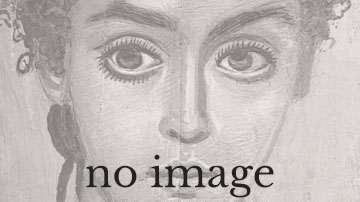Search
Search Results

Definition
Mesopotamian Art and Architecture
Ancient Mesopotamian art and architectural works are among the oldest in the world, dating back over 7,000 years. The works first appear in northern Mesopotamia prior to the Ubaid Period (c. 5000-4100 BCE) and then developed in the south...

Definition
Code of Hammurabi
The Code of Hammurabi was a set of 282 laws inscribed in stone by the Babylonian king Hammurabi (r. 1795-1750 BCE) who conquered and then ruled ancient Mesopotamia. Although his law code was not the first, it was the most clearly defined...

Video
The Poor Man of Nippur - World's first film in Babylonian
"The Poor Man of Nippur" is a c. 3,000-year-old comic folk tale in Babylonian language. The main manuscript is a clay tablet from 701 BC found at the site of Sultantepe, in South-East Turkey. Recounted by a third-party narrator, it tells...

Article
Cuneiform Lexical Lists
Lexical lists are compilations of cuneiform signs and word readings written on clay tablets throughout Mesopotamia. From the late 4th millennium BCE up to the 1st century CE, scribal communities copied, modified, and passed on these cuneiform...

Video
The Babylonian mind
Trace the legacy of Babylonian discoveries and ideas, including their mathematical system based on 60 and their desire to predict the future. With British Museum curator Irving Finkel. http://www.britishmuseum.org/about_this_site/audio_and_video/exhibitions_-_archive/babylon_-_video_archive/babylonian_mind_video.aspx...

Video
82nd & Fifth: Babylonian Lions
http://82nd-and-fifth.metmuseum.org/bricks Explore this object: http://82nd-and-fifth.metmuseum.org/two-panels-with-striding-lions-babylonian-31.13.1-.2 "It always had this possibility to come alive in a very real sense." 82nd &...

Video
Cradles of Civilization - Babylonian Math
In the sixth segment of Dr. Neiman's second lecture, he reviews Babylonian advances in astronomy and mathematics. He also credits the Babylonians with devising some of civilization's most basic concepts: dividing the circle into 360 degrees...

Definition
Mesopotamia
Mesopotamia (from the Greek, meaning 'between two rivers') was an ancient region located in the eastern Mediterranean bounded in the northeast by the Zagros Mountains and in the southeast by the Arabian Plateau, corresponding to modern-day...

Definition
Meiji Period
The Meiji period refers to the period in Japanese history from 1868 to 1912 during which the Meiji Emperor reigned. Following the overthrow of the Tokugawa shogunate in the Meiji Restoration of 1868, Japan's new leaders embarked on a program...

Definition
Assur
Assur (also Ashur, Anshar) is the god of the Assyrians who was elevated from a local deity of the city of Ashur to the supreme god of the Assyrian pantheon. His attributes were drawn from earlier Sumerian and Babylonian deities and so he...